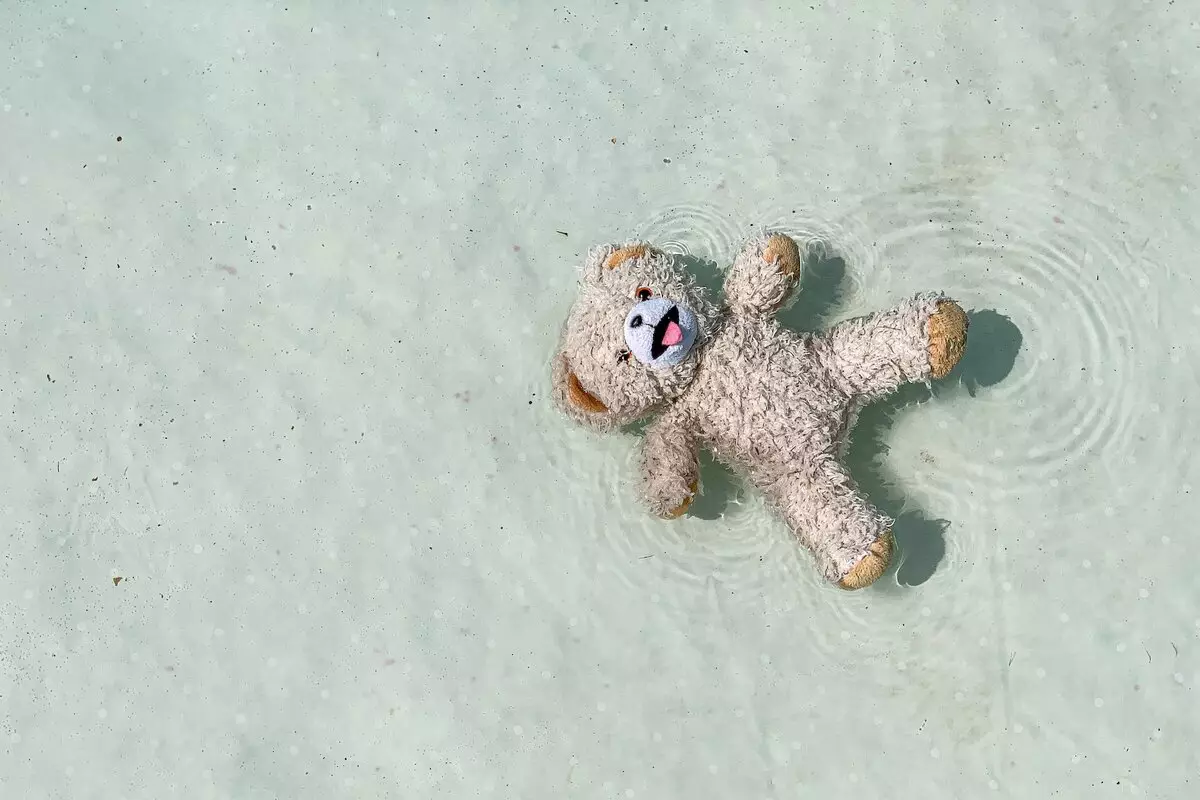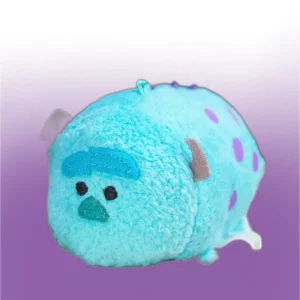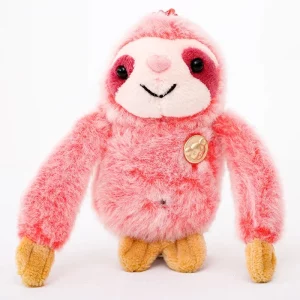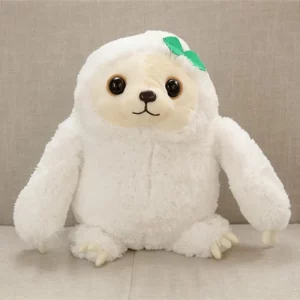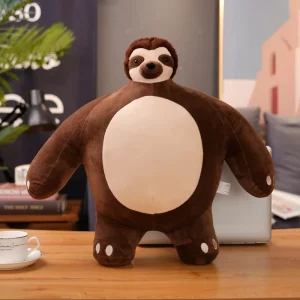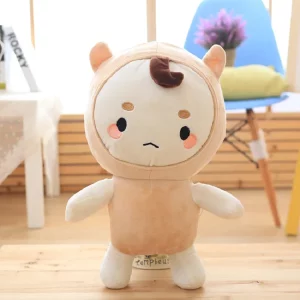Have some white-turned-brown teddy bears in your collection? Or perhaps your vibrant plush toys now look dull and lifeless? You’re not alone if you’ve ever found yourself gazing at your once-vibrant plush toys, now faded and dirty.
Over time, these cuddly companions can accumulate dust, stains, and general wear and tear, leaving them far from their original charm. But fear not, for in “The Complete Guide to Cleaning Plush Toys,” we will embark on a journey to revive the warmth and nostalgia of your cherished stuffed animals.
Whether you’re a parent trying to revive your little one’s plush friend or a collector seeking to preserve the new-like condition of your antique teddies, our guide will arm you with the know-how and techniques.
What’s more, we’ll also give you some handy tips on disinfecting plush toys, storage and organizing solutions, recommendations on the best disinfecting products, and more.
So, without any further ado, let’s dive right in, shall we?
Introduction to Plush Toys and Their Care
Plush toys come stuffed with flexible materials such as cotton, wool, polyester fiber, straw, etc. As a result, they’re generally soft to the touch and are marked by their cuddly nature. The outer coverings of these toys are made with soft cloth or other fabrics such as plush (hence the name).
Other names, such as plushies, stuffed animals, stuffies, cuddly toys, and soft toys know these toys. It wouldn’t be wrong to use these terms interchangeably.
Stuffed animals are, however, more specifically referred to toys that take the form of an animal. For example – the classic teddy bears. On the other hand, plush toy is a broader term that refers to all stuffed toys, irrespective of their color or character.
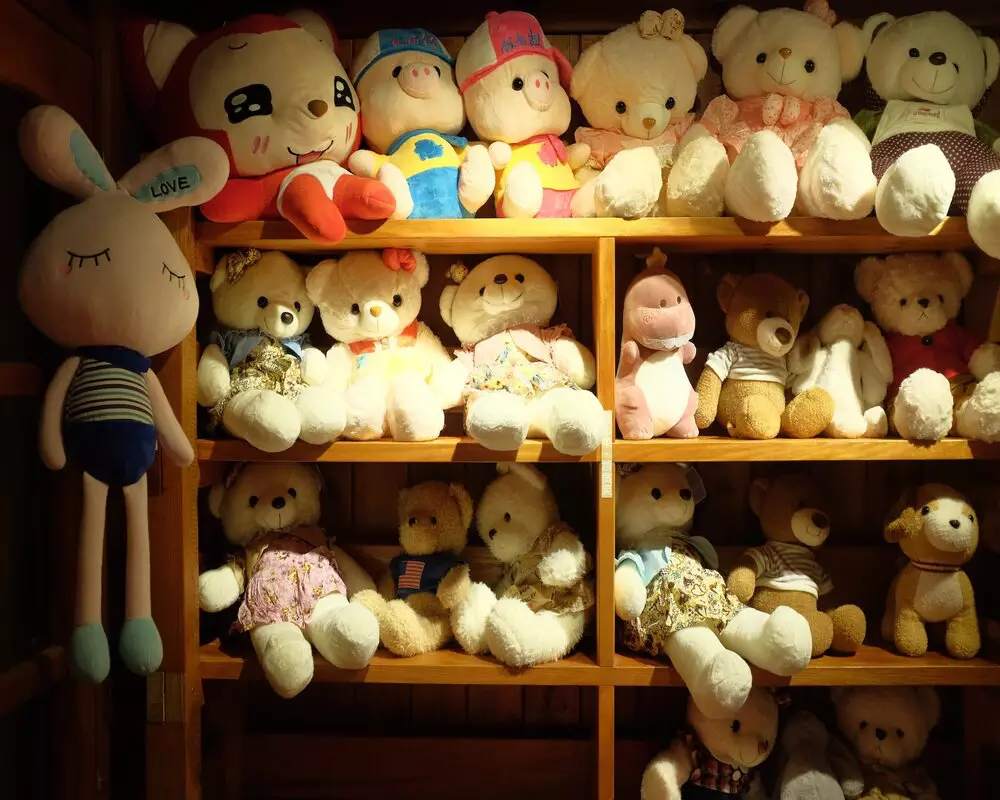
Unfolding the World of Plush Toys
Sure, the plush toy market has soared to new heights since the emergence of brands like Squishmallows in 2017. But did you know that the origins of these cuddly toys trace back to the 19th century?
Germany’s Steiff company created the first stuffed animal under aunt-nephew duo Margarete and Richard Steiff. It was a felt elephant originally sold as a pincushion. Fast forward to 1903, and we witnessed the creation of the first Teddy Bear in Germany and America simultaneously, sky-rocketing plush toys’ popularity. And the rest is history!
Today’s modern world of plush toys is massive and diverse. You’ll come across an endless list of plush types, each marked by its own character, patterns, colors, backdrops, and whimsical charm. Some of the most popular types of plush toys are Kawaii Japanese Plushies, Teddy Bears, and Giant Plush Toys. (More on the types of plush toys in the next section. Please scroll down to find it).
The Crucial Task: Why Cleaning Plush Toys Matters
Your plush toy might be the cutest thing you own. But it is only as good as how well you maintain it. In other words, neglecting proper cleaning and maintenance can gradually diminish the appeal of your beloved plushies.
For many adults, holding onto their childhood plush toys throughout their entire lives is a cherished tradition. What makes this enduring connection possible? The answer is simple – frequent maintenance.
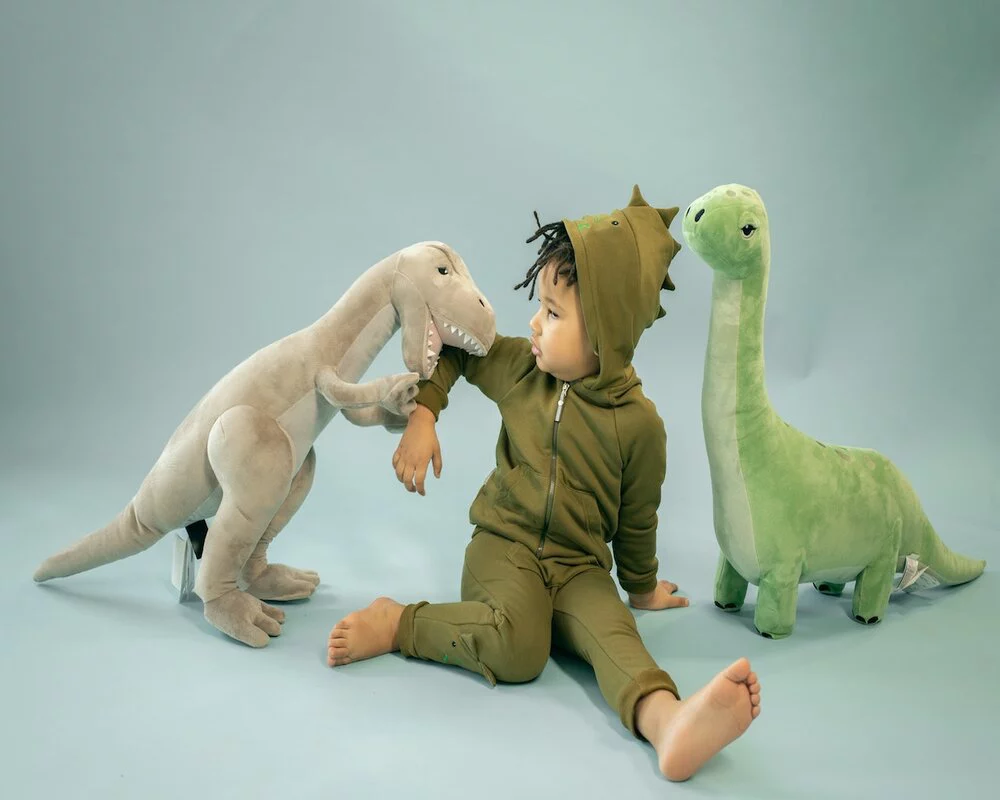
Besides, cleaning plush toys becomes even more vital when it comes to children. There are several compelling reasons for this heightened necessity. For one, children have an innate tendency to explore the world through their mouths, often putting anything and everything within reach into their little mouths.
Furthermore, kids also get their toys into all sorts of messy situations. Whether it’s spilled juice or muddy adventures, plush toys can easily become soiled.
Hence, cleaning plush toys helps remove dirt, dust, and potential allergens, ensuring a safer play environment for your little one. Additionally, clean plushies look and smell better, making them more appealing.
Overall, cleaning plush toys matters for two main reasons- hygiene and longevity.
Different Types of Plush Toys
Attempting to list all the distinct types of plush toys could result in an endlessly long article. That’s why we have provided a selection of the prominent ones below:
Teddy Bears
Teddy Bears are more than just toys. Ever since its creation in 1903 to the present day, these plush companions have been linked with heartwarming stories and sentiments.
Ever wondered how Teddy Bear got its name? It was originally named “Teddy’s Bear,” in honor of the late President Theodore Roosevelt. This naming arose from a memorable incident in 1902 when Roosevelt, during a hunting expedition, demonstrated compassion by refusing to shoot a defenseless bear.
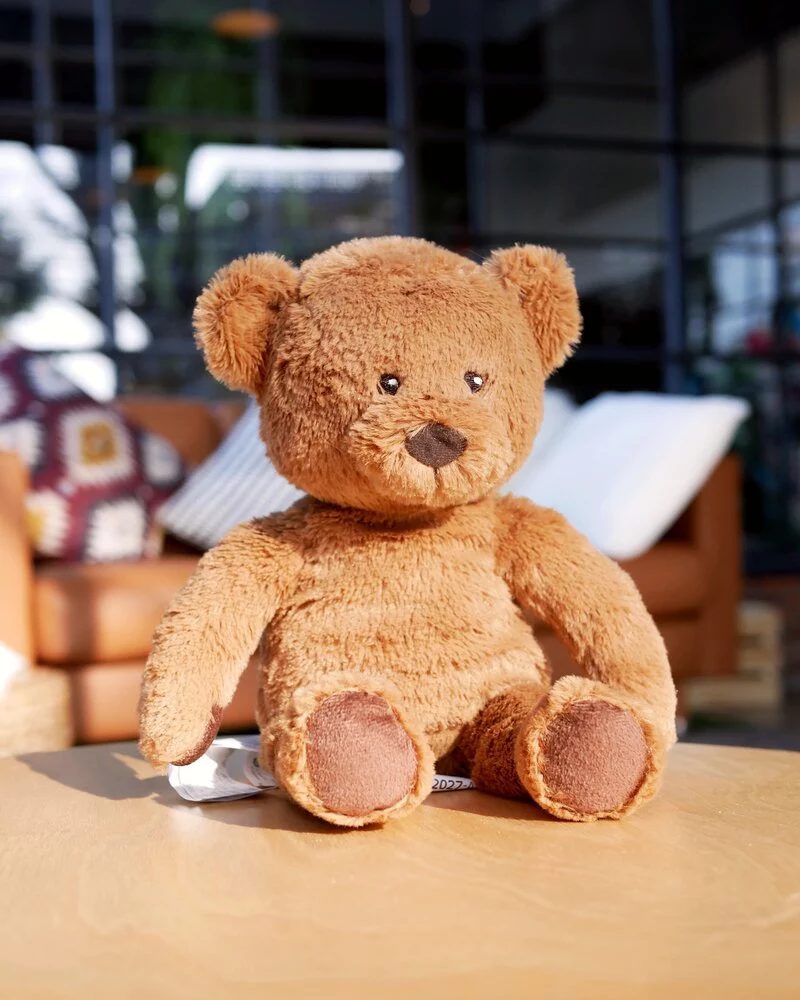
Over the years, Teddy Bears have evolved into symbols of comfort, love, and friendship. In fact, there’s even a dedicated day for gifting Teddy Bears to loved ones in the week leading up to Valentine’s Day. It is a testament to their role in conveying affection.
Giant Plush Toys
Any plush toy measuring 2 feet and above falls under the category of Giant Plush Toys. Yes, you heard that right. Plush toys can come in such towering heights. Consequently, they make the perfect, life-like cuddlers for adults.
Kawaii Japanese Plushies
“Kawaii” means cute in Japanese. Hence, any overwhelmingly cute plush toy manufactured in Japan can be called Kawaii Plush Toys. One of the classic examples of Kawaii Plushies is Hello Kitty, a Japanese character of a cat made in 1974 by Sanrio.
Squishmallows
Squishmallows is a brand of stuffed animals founded by Kelly Toy Holdings company in 2017. They deserve a special mention due to their devoted fan base. The world of plush toys seems to be divided into two- fans of Squishmallows dominate one, and the other is where all the other types of plush toys hang out.
Character-Inspired Plush Toys
Character-inspired plush toys refer to those that draw inspiration from popular fictional or mythical figures. Likewise, these plushies bring iconic characters from anime, movies, manga, and cartoons to life in a cuddly form.
From popular manga characters like Pochita to Disney princesses, these plushies offer fans a chance to hold their favorite characters close.
A Glimpse into Plush Toy Materials: Polyester, Foam, and More
Modern plush toys are typically made of outer fabrics such as soft cloth, fur fabric, terrycloth, or plush.
Among these, plush is the most common material used in making stuffed toys. In fact, it is also one of the main materials used in the construction of designer toys.
Plush is a luxurious fabric typically made from synthetic fibers like polyester, known for its velvety or fustian-like texture. Its name, “plush,” derives from its wonderfully soft and opulent feel.
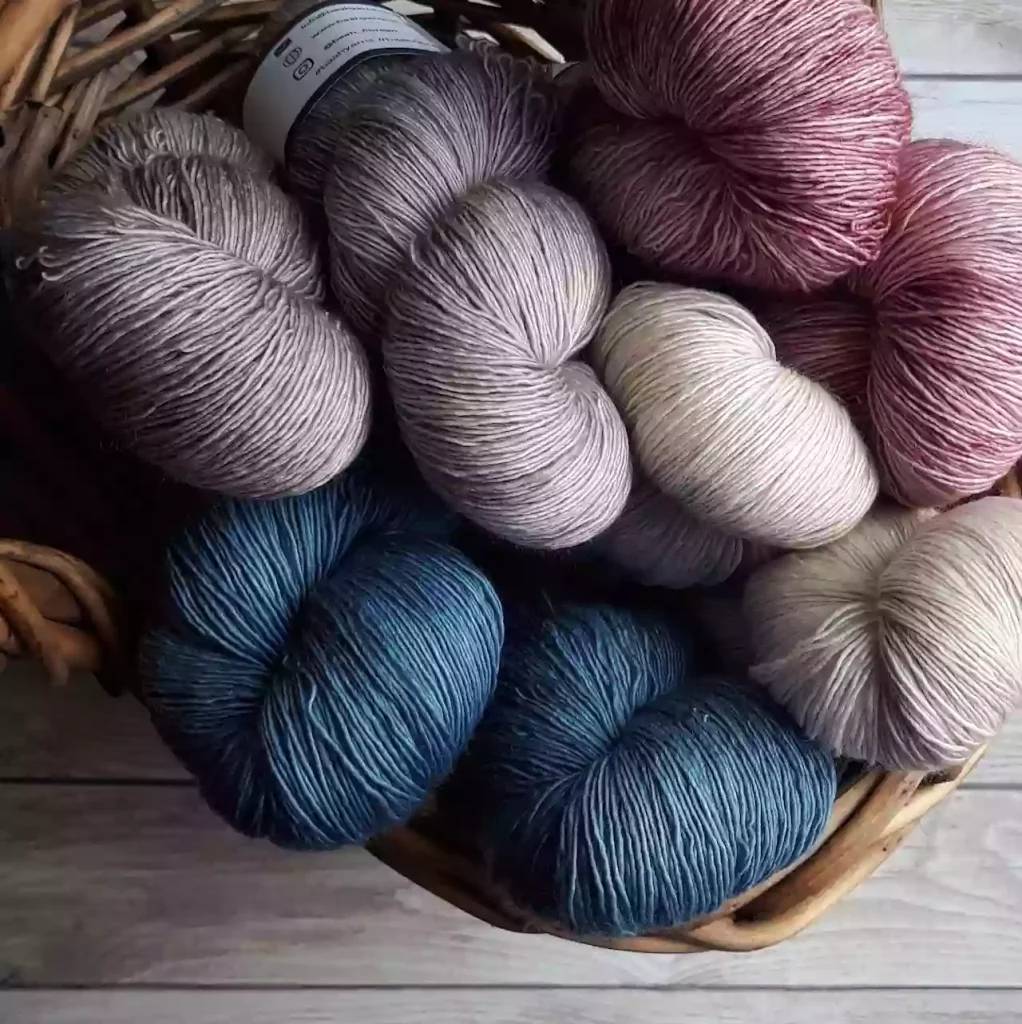
When it comes to the insides of a plush toy, it is usually filled with one of the following materials:
Polyester
Polyester Fiber
Foam
Cotton
Wool
Bamboo
Straw
Mohair
Corn Fiber Fill
Eucalyptus
Pellets
Beans
Spotlight on Specific Toys: The “Teddy Bear White”
White teddy bears possess a unique charm that captures our hearts with their pristine, snow-like appearance. These adorable toys are cherished for their pure, innocent look, radiating feelings of comfort and nostalgia.
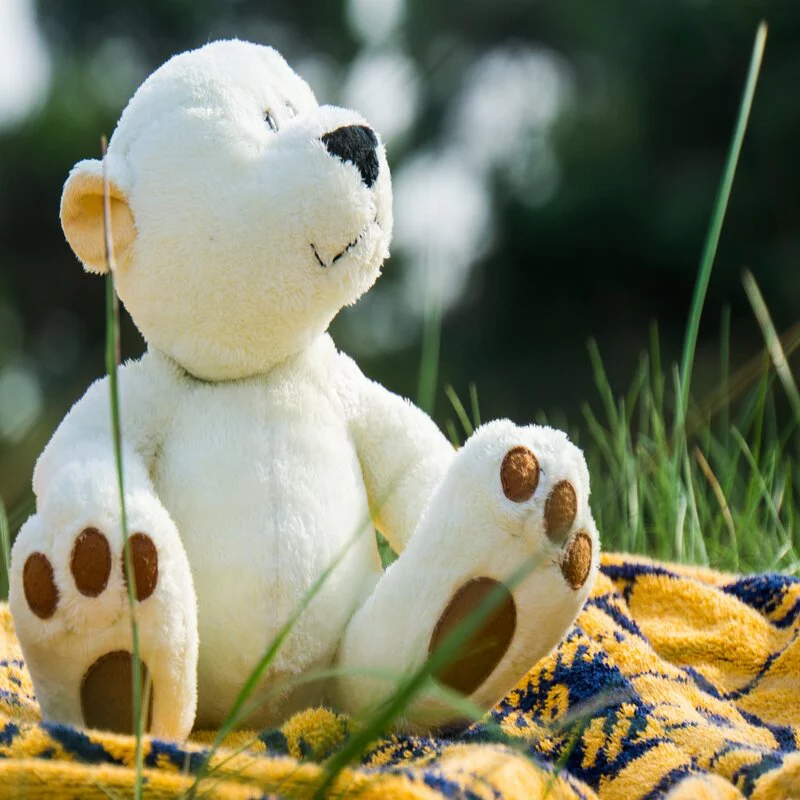
But let’s face it: maintaining the pure beauty of white teddy bears is a distinctive challenge that sets them apart from their colorful counterparts.
Keeping a white teddy bear looking as flawless as the day it was received can be somewhat demanding compared to caring for plush toys of other colors.
The sharp contrast between the white fur and dirt, stains, or smudges can be particularly unforgiving. Unlike darker-colored plush toys that may conceal minor imperfections, white teddy bears tend to expose every little flaw.
Therefore, if you wish to maintain the new-like appearance of your white teddy bear, you must handle it with extra care. Cleaning it gently with suitable cleaning products, following the right storage practices, and regularly inspecting it for any signs of wear and tear are essential to cherish your white plush for years to come.
The “Build-A-Bears”: A Note on Washability
If you consider yourself a true plush toy enthusiast, “Build-A-Bear” might ring a bell. One of America’s most beloved toy retailers, Build-A-Bears deal in customized teddy bears, other stuffed animals, and a wide selection of characters.
What sets them apart is their unique approach, allowing customers (both young and old) to craft their very own unique stuffed toy through an easy, step-by-step process. Apart from the bear, you can personalize your creation further with add-ons like scents, sounds, and outfits.

Cleaning is a cinch when it comes to Build-A-Bears. For spot cleaning, the company recommends using their in-house Bear Stuff Cleaner. As for deep cleaning, it is as simple as securing your teddy inside a pillowcase and tossing it in the washer.
Want to learn the steps involved in washing a Build-A-Bear? Check out our article on – Understanding the Care for Build-A-Bears: Are They Washable?
How to Clean Various Types of Plush Toys?

How to clean plush toys? Ah, that’s easy. Just soak them in soapy water or toss them in the washing machine, right? Wrong!
Note this: various types of plush toys will need different cleaning methods depending on their materials. For example, polyester or cotton-made plushies can typically be cleaned effectively in a washing machine. In contrast, those constructed with spandex or wool may demand a more delicate, hand-washing approach.
Some modern plush toys even come stuffed with memory foam. You might have to stick to spot or surface cleaning in such cases.
Confused? Don’t worry; we have broken down the three common cleaning techniques you’re likely to need, regardless of the kind of plush toy you own.
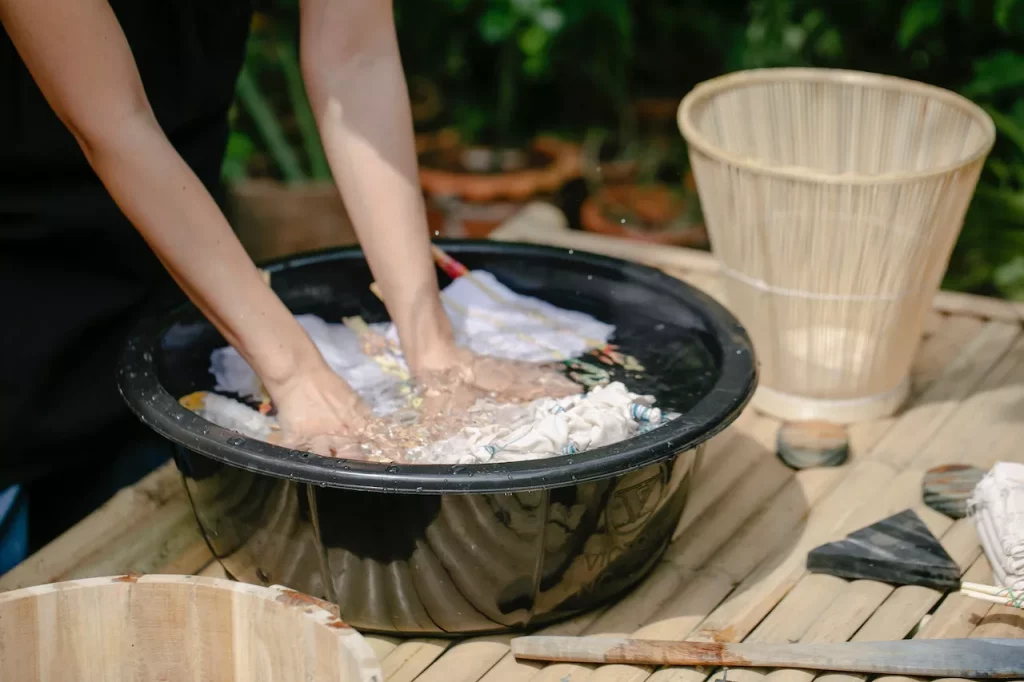
The General Process: Cleaning Plush Toys Effectively
When it comes to cleaning plush toys effectively, there are three primary methods to consider. However, before going any further, take a step back and check your toy’s care label. It will guide you on which cleaning method to employ.
Spot Clean
If you don’t have a commercial spot stain remover, create one at home with one teaspoon of distilled white vinegar and 8 ounces of cool water. Always do a patch test in a hidden area of your plush toy first.
You can proceed if the fabric shows no signs of damage or discoloration after 24 hours.
Begin by saturating a clean towel in the vinegar mixture and blot the stain.
Continue until the towel no longer absorbs any color from the toy’s surface.
Next, take another clean towel and soak it in clean water.
Then, dab the same area to rinse off the stain remover mixture.
Allow your plush to air-dry, and you’ll be all set!
Hand Wash
Most plush toys, irrespective of their fabric, can be hand-washed safely. Just be gentle with the whole process.
Add a few drops of mild detergent to cool water.
Submerge your plush toy in soapy water and gently massage and squeeze your toy, paying particular attention to any stained areas.
Allow the plush toy to soak in the soapy water for 15-20 minutes if required.
Next, rinse the plush toy under cool running water, ensuring all soap residue is washed off.
Remove excess water by gently squeezing the toy without wringing it.
Finally, allow it to air dry completely.
Machine Wash

You can safely wash plush toys made with soft fabric like polyester or cotton in the washing machine. Follow these steps:
Protect your plushie by placing it in a mesh laundry bag or a zippered pillowcase.
Toss it in your washing machine.
Add a few drops of mild detergent if required.
Wash it on the gentlest cycle of your machine.
Take your plushie out of the bag and hang or lay it flat on a clean surface to air-dry.
Pro Tip*: Use a dehumidifier or fan to speed up drying. Never dry it under direct sunlight. *
Understanding Cleaning Terms: What Does “Surface Washable” Mean?
Some clothes or fabric products have a “surface washable only” tag. What does it mean for your stuffed animal? It means machine-washing or submerging your plushie in water is not advisable. Instead, you should only clean the toy’s surface with a soft, damp cloth.
Here’s how you can surface-wash a plush toy:
Simply dampen a clean, soft cloth with cold water or mild detergent.
Gently wipe the toy, paying extra attention to heavily soiled areas.
If your plushie has fur, you can use a stiff brush to brush the fur in all directions. Alternate between wiping and brushing.
Once done, wipe the toy clean with another dampened cloth to remove any residual dirt or detergent.
Finally, allow to air-dry.
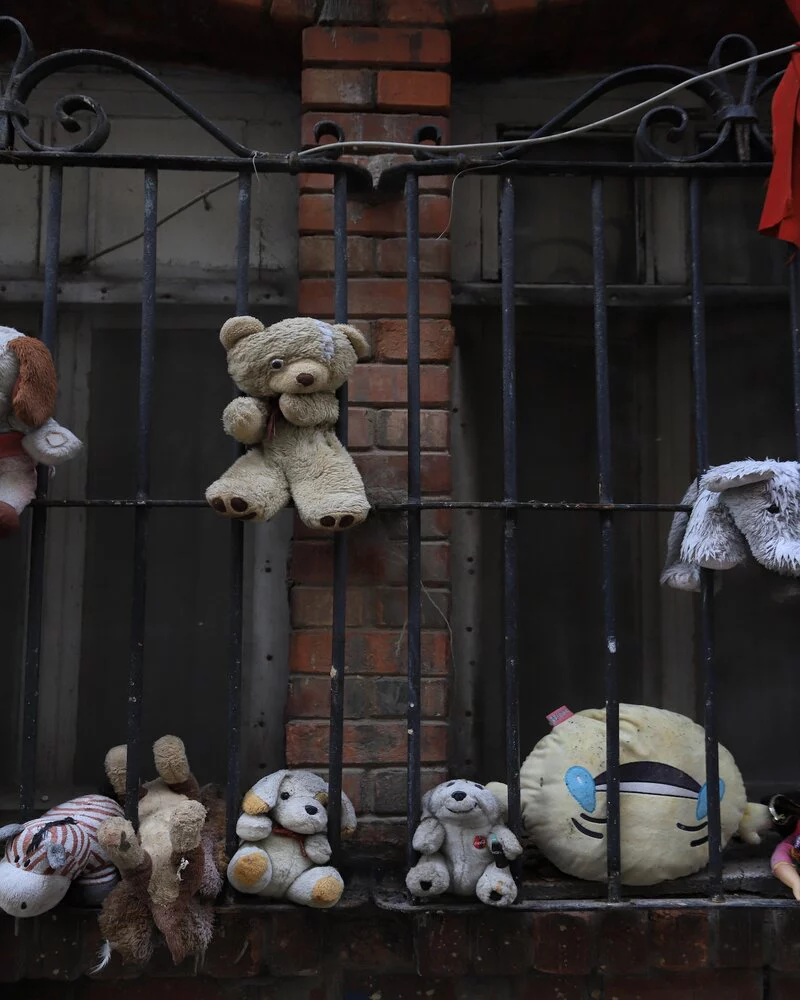
Specialized Cleaning Products: The Role of “Teddy Bear Cleaner”
Most Teddy Bears, especially antique teddies made of sheepskin or mohair, should only ever be surface cleaned. For this, you can use a special Teddy Bear cleaner like a mixture of mild shampoo or carpet foam with warm water.
As for modern teddy bears made with synthetic fur, you can safely wash them by soaking them in a mixture of liquid soap and warm water.
To learn more about how to clean Teddy Bears, check out our Comprehensive Guide to Washing Teddy Bears of All Sizes.
How to Clean Plush Toys for Kids?
Children’s plush toys often need regular cleaning due to the adventures they share with your kids. They can find themselves in all sorts of situations, from puddles and being soaked in saliva to becoming victims of spilled juice or food.
Sometimes, a simple brushing removes the day’s accumulated dirt and grime. However, there may be days when a more thorough cleaning is required.
Generally, you can clean plush toys for kids by simply soaking them in soapy water. Then, wait for about 20 minutes. Hand-wash gently and rinse it under running water until the water runs clean. Finally, blot the toy with a clean towel to remove excess water and allow it to air dry.
Essential Cleaning Tips for Children’s Toys
Use a chemical-free cleaning solution of 1:1 vinegar and water for spot cleaning.
You can wipe vinyl or plastic dolls with baby wipes.
Use a soft brush to brush through the furs of stuffed animals while surface washing them.
If the plushies come with electronic parts, remove them before washing.
Use a hair blower on cool setting to dry and fluff the stuffed animal.
Always disinfect your kids’ stuffed toys after washing/cleaning them.
Further Reading: The Comprehensive Guide to Cleaning and Disinfecting Kids’ Toys
Tips and Tricks: Cleaning and Maintaining Plush Toys for Adults
We have already discussed the three primary methods for cleaning any plush toy, be it for adults or kids. So, you can refer to the above section for that. However, in this section, we’ll give you a few more handy tips and tricks:
For the adventurous ones who are confident in their sewing skills, try this method. It’s worth noting that the “non-washable” label on plush toys is often related to their stuffing rather than the outer material. After all, plush toys typically feature an outer fabric that is entirely washable.

In this case, carefully split a side seam and remove the stuffing. Then, handwash the outer covering as you normally would and let it air dry.
Once completely dried, you can refill it with the original stuffing or replace it with washable stuffings like polyester or cotton.
Finally, stitch the toy back.
Proper Storage of Stuffed Animals for Adults: Do’s and Don’ts
Wondering how to store stuffed animals for adults? Here are some do’s and don’ts to help you get started:
You can display your collection of stuffed animals on cabinets with glass doors. Displaying them behind doors will help protect your prized possessions from dust and potential damage.
To enhance the display, you can organize your plushies by size, color, or theme.
You can decorate the cabinet with LED lighting for that extra oomph.
If you’re an avid plush toy collector looking for a long-term storage solution, how about storing them in air-tight storage bins?
Make sure to repair any tear and clean your stuffed animals before storing them.
Always opt for acid-free boxes for storing your stuffed animals.
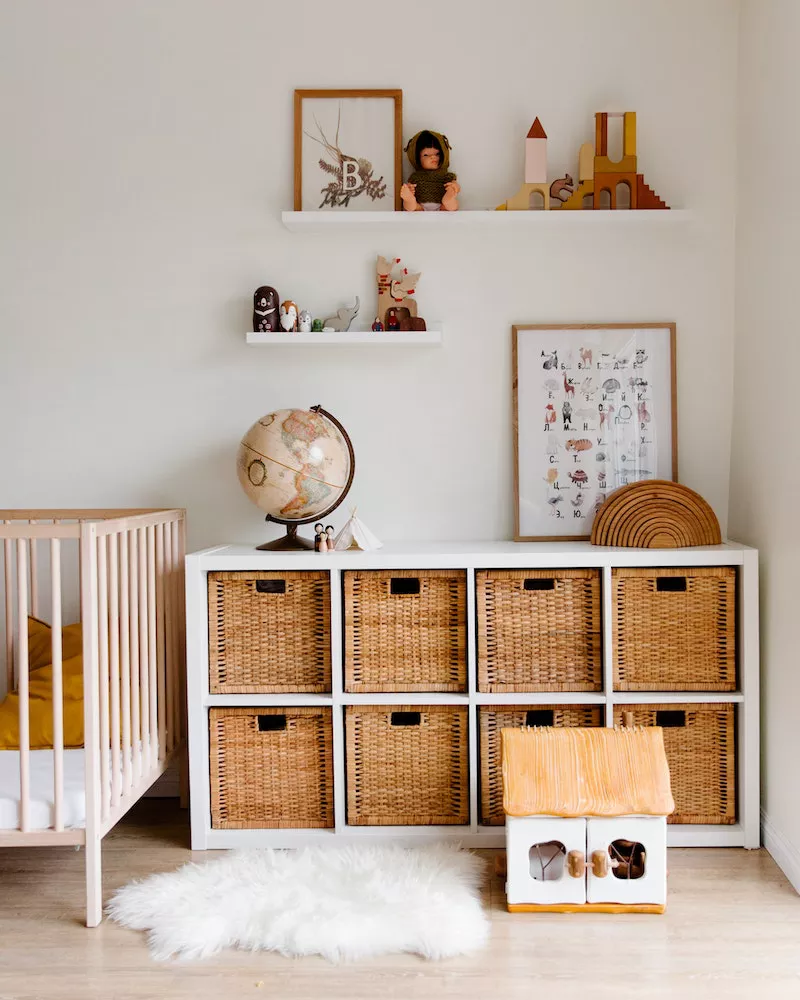
The Role of Disinfectants in Cleaning Plush Toys
When it comes to keeping your plush toys clean, washing them is the first step, and disinfecting is the second. Disinfecting is as important as washing, especially in a home with pets and kids.
Disinfectants are invaluable tools in cleaning plush toys. They help remove germs and bacteria from toys, make playtime safe and hygienic, and even extend the lifespan of toys.
The Power of Disinfection: Why It’s Essential
Below, we have mentioned some significant reasons why disinfecting your plush toys is essential:
Kill Invisible Germs And Bacteria
Sure, washing your stuffed toys eliminates all surface dirt and grime. But what about the germs and bacteria not visible to the naked eye? Disinfection is your answer.
Disinfecting your plushies means addressing and getting rid of the germs lurking within the plush fabric. It ensures a more thorough cleaning process, promoting a higher level of hygiene.
Prevent Cross-Contamination
Disinfection plays a huge role in preventing cross-contamination, especially in households where kids and pets co-exist. In such environments, toys frequently find themselves in the hands, mouths, and playful interactions of your little one and furry friends.
Although endearing, this sharing of toys has the potential risk of cross-contamination. Pets like dogs and cats may carry germs on their fur, which can easily transfer to plushies. Even when not actively played with, plush toys can pick up dust, allergens, and microorganisms from pet hair and dander.
Hence, disinfection of plush toys becomes essential.
Eliminate The Risk Of Infection
As we mentioned, kids have the habit of mouthing everything they can get their hands on, including plush toys. In doing so, if the toys contain germs and bacteria, the risk of infection increases.
Disinfecting is an effective step in killing such disease-causing microorganisms, thereby preventing infection.
Create A Safe Environment
You should disinfect plush toys and storage spaces to create a safe and hygienic play environment for your little ones.
Extend The Lifespan Of Plushies
Accumulated dust, dirt, germs, and bacteria can degrade the materials of plush toys over time. Hence, proper cleaning and disinfection are required to maintain the original beauty of these toys and extend their lifespan.
Introducing “Clean Smart Disinfectant Spray”
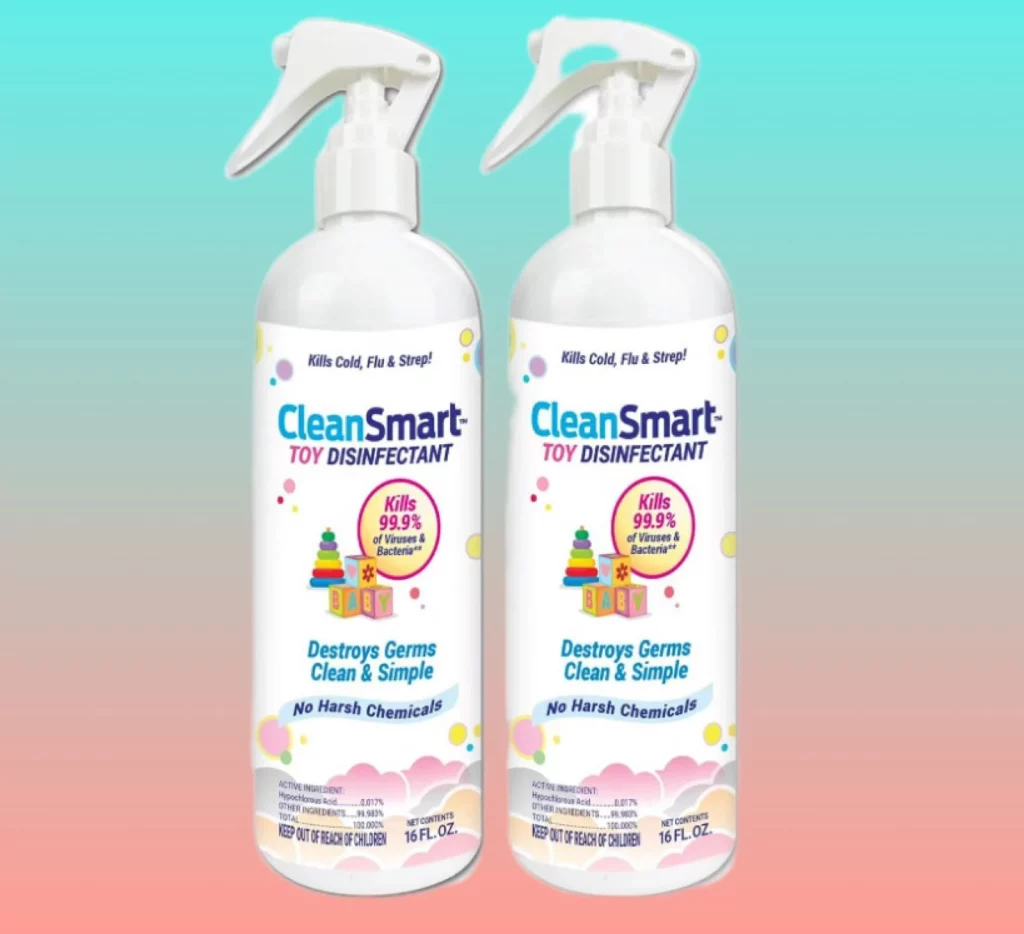
The Clean Smart Disinfectant Spray is one of the most popular products used to disinfect plush toys. You can easily find it at your nearest retail store or shopping sites like Amazon.
This disinfectant can kill up to 99.9% of disease-causing bacteria, germs, and viruses. What’s best about this product is that it is made with 100% natural ingredients and is safe to be used around pets.
To discover if Clean Smart Disinfectant Spray is a valuable investment, check out our in-depth review that dives deeper into its features, pros, and cons.
Safety First: The Best Disinfectant Sprays for Baby Toys
When looking for the best disinfectant sprays for baby toys, it’s not as easy as picking a random product with a 99% germ-killing feature. Instead, you should focus on those disinfectants that are effective yet gentle and non-toxic.
To save you from all the trouble, we have compiled a list of the best disinfectants for kids’ plush toys. They check all the boxes: effective germ-killing formula, safe for babies, and non-toxic.
Clean Smart Toy Disinfectant Spray
Better Life Natural All-Purpose Cleaner
Babyganics Toy And Highchair Cleaner Spray
Mommy Pure All-Purpose Disinfectant Spray
For an in-depth review of each product, head over to our Comprehensive Guide On The Best and Safest Disinfectant Sprays for Baby Toys.
Navigating Disinfectant Products: When and How to Use Disinfectant Laundry Spray
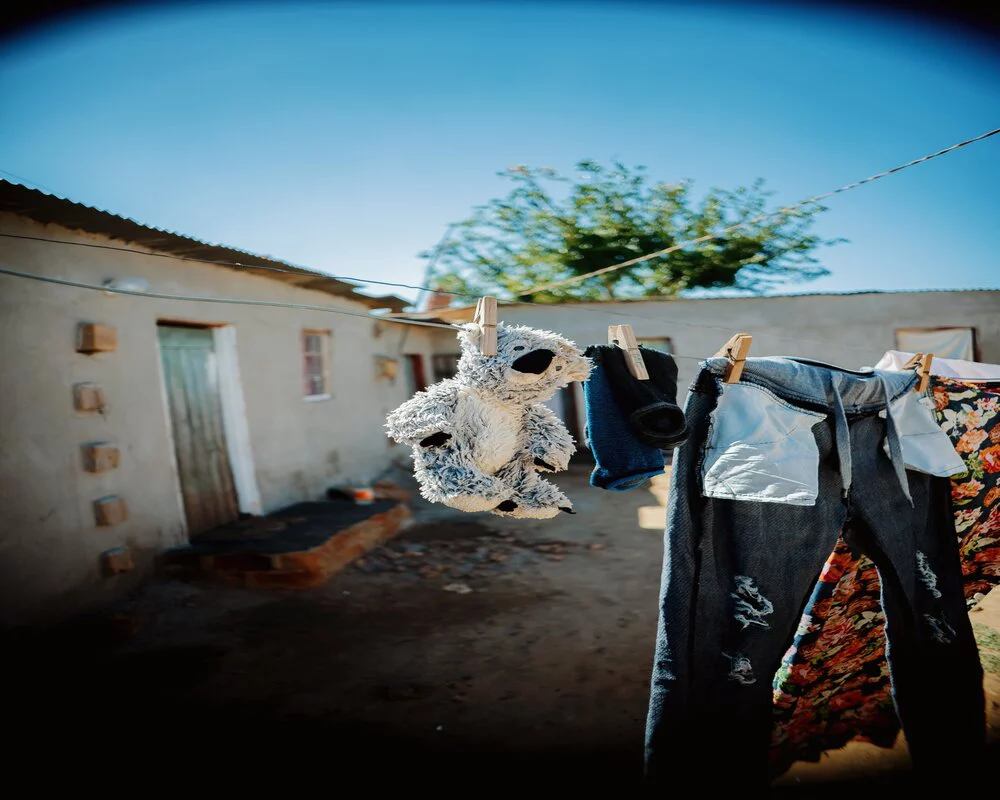
While on the topic of disinfection, let’s widen our view a bit to see how we can keep other things clean, too, like clothes and fabric furniture. After all, maintaining a clean living environment encompasses more than just stuffed animals.
Disinfecting laundry spray is primarily used for disinfecting clothes and fabrics. When used correctly, you can use it to kill germs and bacteria from your garments, fabric furniture, curtains, and even soft toys.
Here are some tips on how to use a disinfectant laundry spray the right way:
·Always opt for bleach-free disinfectants.
·Pre-wash and dry heavily soiled items.
·Each disinfectant bottle will come with an instruction label. Take a moment to read it and follow the guidelines carefully.
·Spray your clothes or furniture with the disinfectant spray and let it air dry. No need to wash them again afterward.
Restoring Plush Toys: How to Breathe Life Back into Old Toys
Have you noticed that your child’s favorite plush companion has seen better days? Or maybe you stumbled upon your cherished childhood stuffed animal while rummaging through the basement, and it’s far from its original glory. Now, you’re left pondering how to breathe fresh life into these beloved keepsakes.
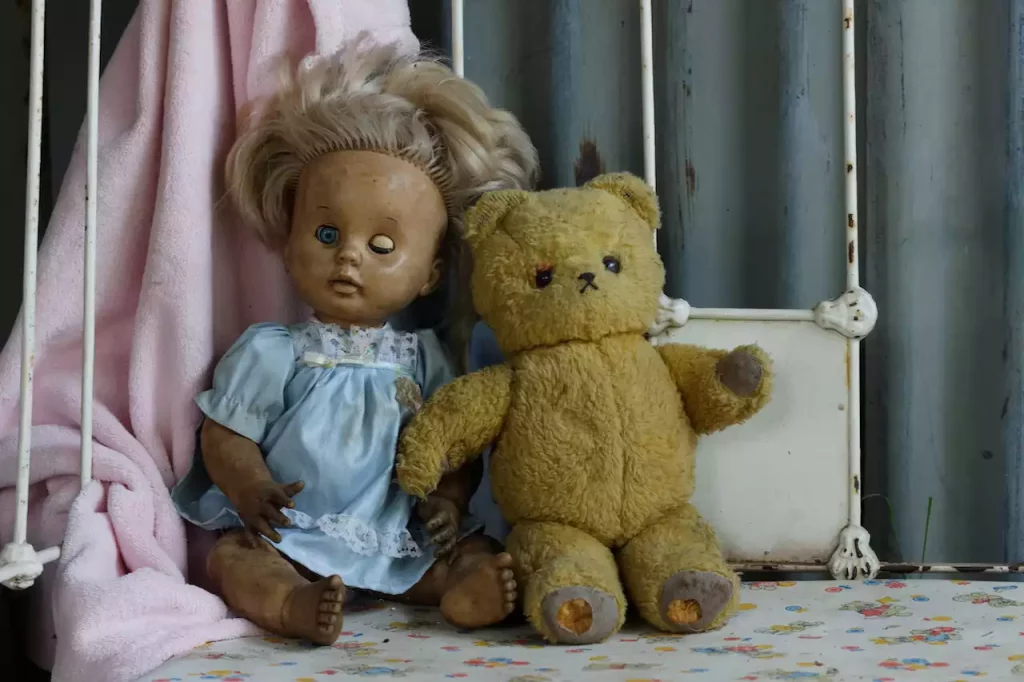
Here’s what you need to do:
·First, dust it off by giving it a few gentle taps with your hand.
·Check for any wear and tear. Repair if needed.
·Wash it properly following any of the three methods discussed above, depending on its material.
·Allow it to air dry completely.
·Once dry, consider giving your plushie a makeover by adding new outfits or accessories to freshen up its look.
The Art of Restoration: Tips on Reviving Stuffed Animal Fur
Sometimes, washing and disinfecting your plush toys might cause your plush companions to lose their original form and beauty. And sure, washing your stuffed animals is super important. However, ensuring they don’t lose their original charm also matters.
After all, what good is a plush toy if it can’t give you the cuddly comfort you desire?
For a more detailed tutorial, you can check out our Comprehensive Guide On How To Restore Stuffed Animal Fur. But if you are just looking for a few quick tips, you’re in the right place:
·Soak your stuffed animal in fabric softener to make it fluffy again. However, make sure that the toy’s material is fabric-softener friendly.
·While washing your stuffed animal, brush the fur with a stiff bristle.
·Use a towel to rub it dry before allowing it to air dry.
·Use a hair blower on the cold setting to fluff up the fur.
Storing and Organizing Plush Toys: Keeping Toys Tidy
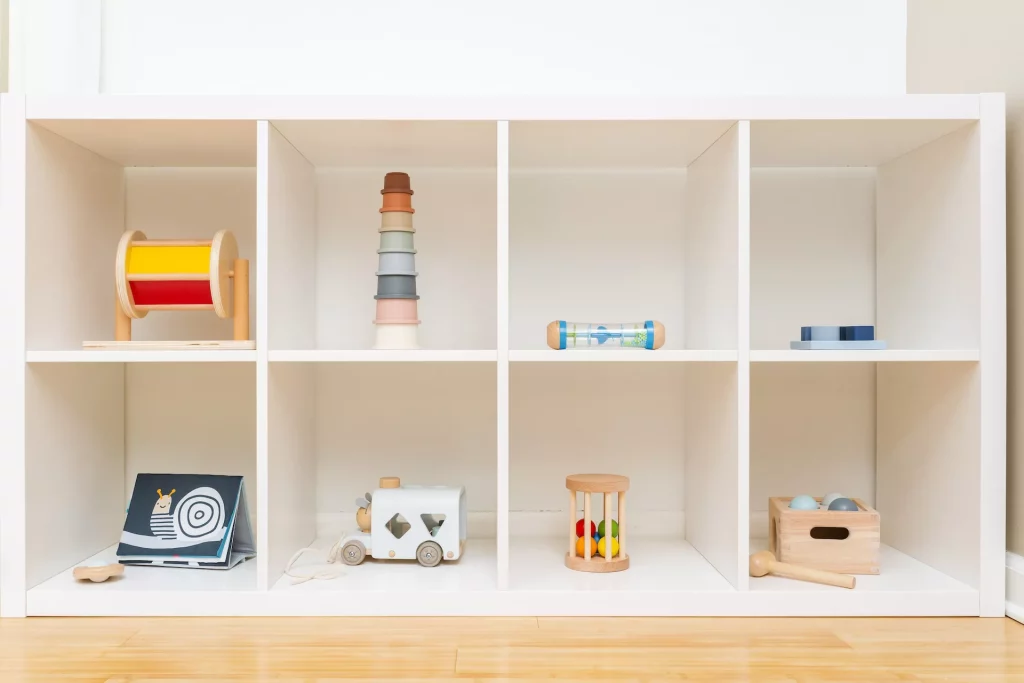
You have cleaned your plush toys, disinfected them, and perhaps even groomed them with a spritz of pillow mist. Now what? Well, it’s time to store and organize them properly to maintain their clean condition. Here’s how:
·Choose a clean and easily accessible place to store your toys. These include shelves, cabinets, storage bins, toy chests, or hanging organizers.
·Make sure to disinfect and clean your storage space first before placing your plush toys.
·If you’re storing plushies for the long term, you might want to store them in air-tight boxes.
·Another solution is to wrap the plushies in acid-free tissue paper before storing them in boxes.
·Categorize and label if you have a massive collection of plush toys.
·Even though you’ve already cleaned your plush toys, dust can still settle on them over time. Make a habit of dusting and vacuuming the area where you store your plush toys. You can do this weekly.
The Stuffed Animal Holder: An Innovative Organizational Solution
Stuffed animal holders are one of the trendiest solutions for storing, organizing, and displaying your collection of toys. There are several types of stuffed animal holders, all of which we have discussed in our guide on Efficient Storage Solutions for Plush Toys.
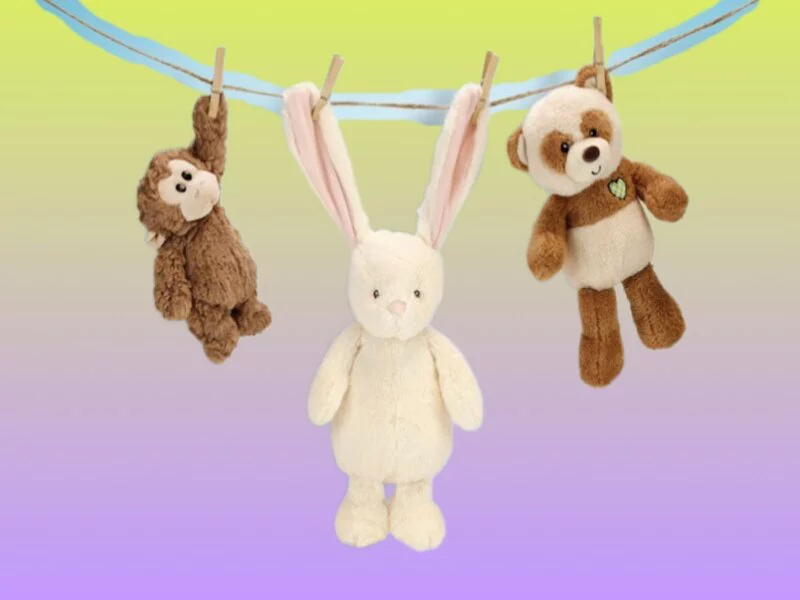
For now, let’s review some of our favorite stuffed animal holder ideas:
Make a Stuffed Animal Hammock
Several toy collectors and enthusiasts use this clever method to display and organize their plushies. Plus, it’s the perfect storage solution, especially for those with limited floor space.
Simply install hooks on either side of the wall or ceiling to hang a hammock, old blanket/bedsheet, or net. Place your stuffed animals according to size, color, or theme, and ta-da! You have a practical and visually appealing way to display and organize your collection.
Use Hanging Organizers
Hanging organizers like hanging bag closets or over-the-door shoe organizers are another excellent option to showcase your plush toy collection.
Create A Stuffed Animal Clothesline
This method works best for small-sized plushies.
Install hooks on both sides of the wall and attach a clothesline. Next, simply use clothes pegs to hang your cute plushies.
FAQs: Your Plush Toy Queries Answered
Is it Safe to Throw Pillows in the Washer? What You Need to Know
Yes, throwing pillows in the washer is generally safe, provided they are filled with feather, cotton, fiberfill, and down. Do note that different types of pillows will require different washing processes.
Further Reading: Understanding the Washing Process for Different Types of Pillows
Polyester Pillows: Can You Wash Them Safely?
Yes. In fact, polyester pillows are very easy to wash and care for. You can soak them in water and handwash them or toss them in the washing machine.
Further Reading: Can You Wash Polyester Pillows: A Practical Guide
What is the Best Way to Wash Foam Pillows?
The best way to wash foam pillows is by hand. Submerge them in soapy water, massage lightly to lather, and squeeze gently. Afterwards, rinse the foam pillow in clean water multiple times, and let it air dry completely.
Further Reading: The Ultimate Guide to Washing and Cleaning Foam Pillows
Wrapping Up: The Last Word on Cleaning Plush Toys
Still here reading? Congrats; you can now call yourself an expert in cleaning plush toys. Whether you are a parent, caregiver, or a plush toy enthusiast yourself, we hope you are now confident in cleaning your own plushies and maintaining them in new-like condition.
Recap: Reiterating the Importance and Effective Methods of Cleaning Plush Toys
·Stick to the spot cleaning method for non-washable or “surface-cleaning” plush toys.
·Machine-washing or handwashing is recommended for plush toys stuffed with flexible materials like cotton and polyester.
·Never dry your plush toys under direct sunlight. It can damage the toy’s fabric, color, and original form.
·The best way to dry your plush toys is by air-drying or laying them flat on a clean surface.
·Make use of a dehumidifier or a fan to speed up drying.
·Disinfecting plush toys is crucial, especially for children. Doing so will eliminate disease-causing germs, bacteria, and viruses.
